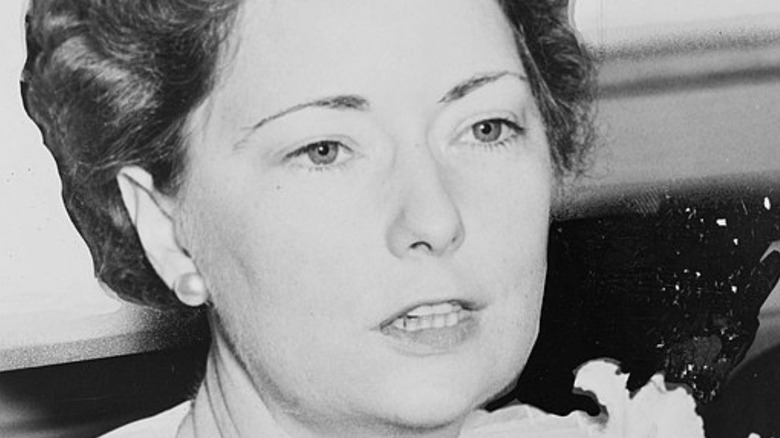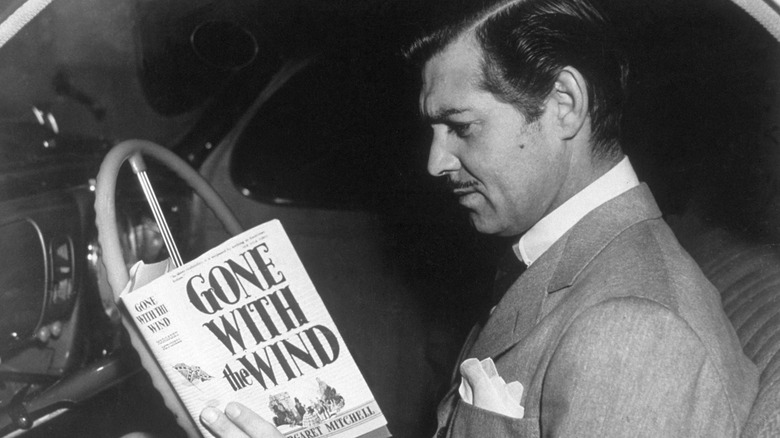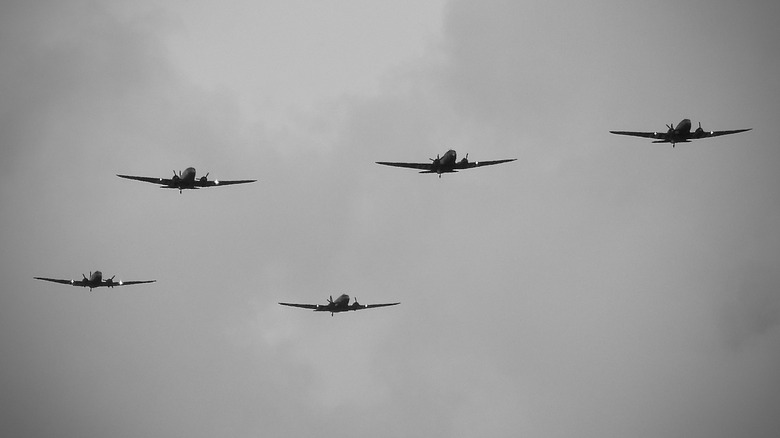Gone With The Wind's Author Had A Secret Eyebrow-Raising Hobby
Frankly, my dear, you might give a damn about a few facts surrounding Margaret Mitchell's personal life. The famed author of "Gone with the Wind" (1936) only published one novel during her life, but she was writing from an early age on her own terms. According to Books Tell You Why, Mitchell's penchant for fiction was apparent from the start. She spent her childhood days filling stacks of notebooks with various short stories under her own mock publishing company, Urchin Publishing Co. During her teenage years, Mitchell actually completed a full-length novel titled "The Big Four," though no copy of it has ever been recovered and nobody knows what happened to the original manuscript itself.
Romance, jealousy, and unrequited passion predominate the themes woven into "Gone with the Wind." Being that Mitchell was allegedly quite the knockout herself, ideas such as these probably came naturally to her. "She has in her brief life, perhaps had more men really truly 'dead in love' with her, more honest-to-goodness suitors than almost any other girl in Atlanta," society newspaper columnist Polly Peachtree once said about the budding author in 1922. Around the same time, Mitchell was exploring her own sexuality in a peculiar way that might surprise you. Then again, being that she was an avid writer herself, it might not come as much of a shock. Apparently, when she was a young woman frequenting New York City, Mitchell reportedly collected risqué works of literature (per Books Tell You Why).
Margaret Mitchell collected erotica
Margaret Mitchell was admittedly a vehement proponent of "all forms of sexual expression," which is why she started collecting erotica as a young woman. Books like "Aphrodite" and "Fanny Hill" occupied her not-so-secret arsenal of literary libido turners, and it was around this time that she started writing "Gone with the Wind" (via Early Bird Books). While the classic Civil War-era novel is by no means a smut piece, it's supercharged with intimate radiance between its two main characters, Scarlett O'Hara and Rhett Butler. Further, "I'd cut up my heart for you to wear if you wanted it," Scarlett declares to Ashley Wilkes at one point (via Google Books)
Having said that, there are certain sequences in the book that do border on what one might consider "abject eroticism," including a controversial love scene on a staircase that has been the subject of much debate over the years (via Spark Notes). For a young woman in the early 1920s, a rich collection of erotica could have been viewed as problematic and shameful, but Margaret Mitchell was an individual who never shielded her ideas about sexuality from the world, often labeling herself as an "unscrupulous flirt" (per Books Tell You Why).
Margaret Mitchell volunteered to aid in WWII
There's no doubt that Margaret Mitchell's unabashed emotional depth was sexually reverberant by and large, but she possessed a distinct sentiment that was geared toward helping others as well. During World War II, she volunteered with the American Red Cross to aid in the Allied war effort by selling war bonds, sewing hospital garments at medical facilities, and writing letters to encourage soldiers fighting overseas. She also sponsored two sea vessels, the USS Atlanta and one other, that were designed to take down enemy aircraft. Sadly, both ships sank during combat (via Books Tell You Why).
After the war ended, numerous cities and towns across Europe were left in decimated shambles. Margaret Mitchell aided in the reconstruction of Vimoutiers, a French town that was destroyed during a battle. "I think people do not understand the extent to which she was involved in philanthropic efforts both in Atlanta and elsewhere," Hillary Hardwick of the Margaret Mitchell House museum once shared (per Aiken Standard).


